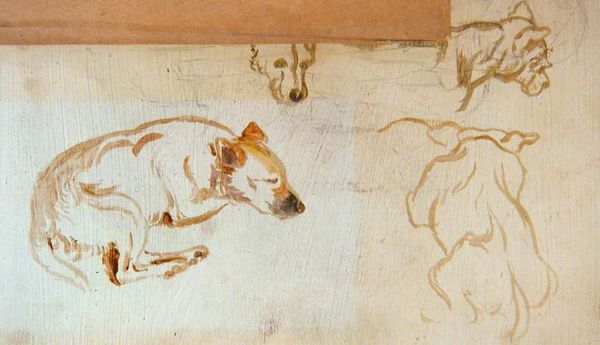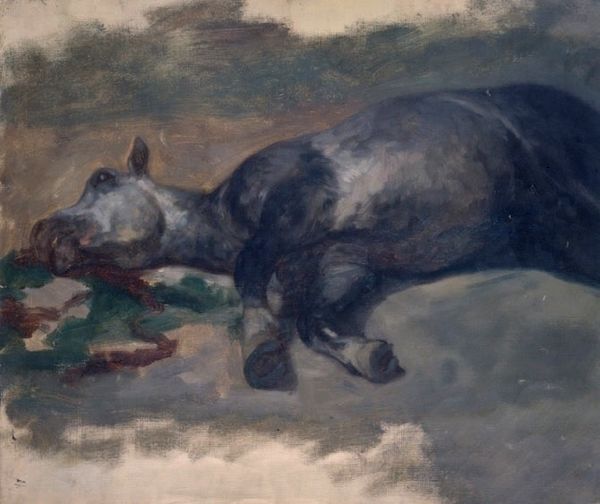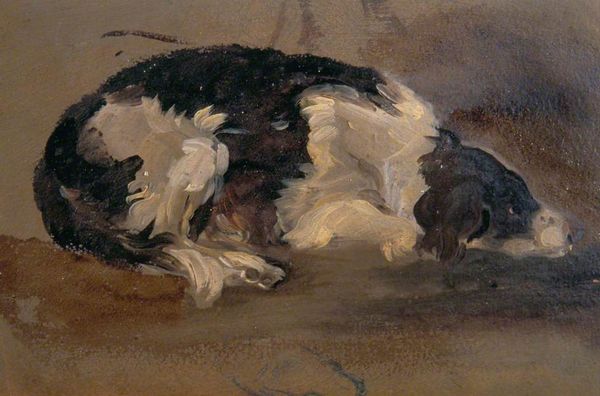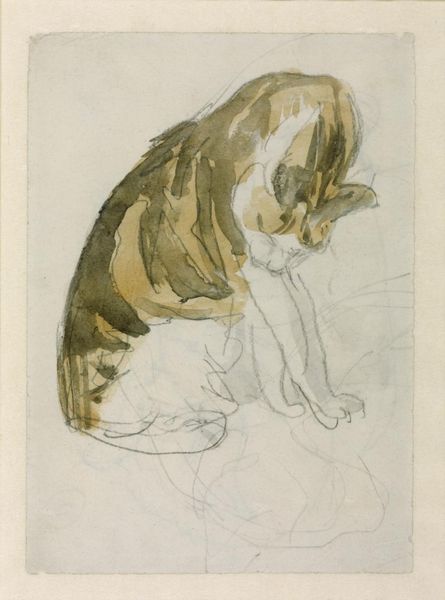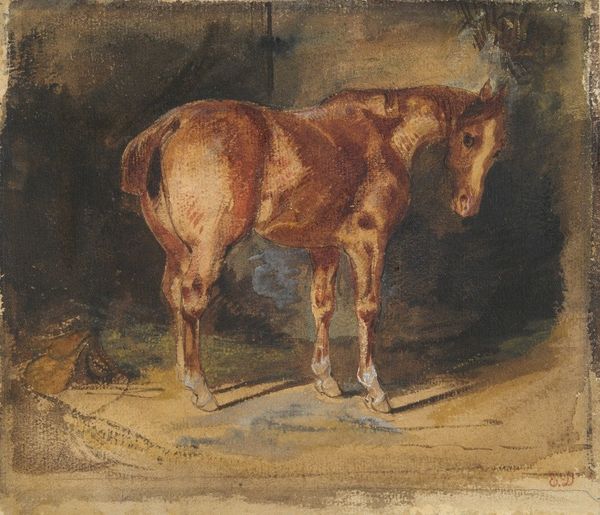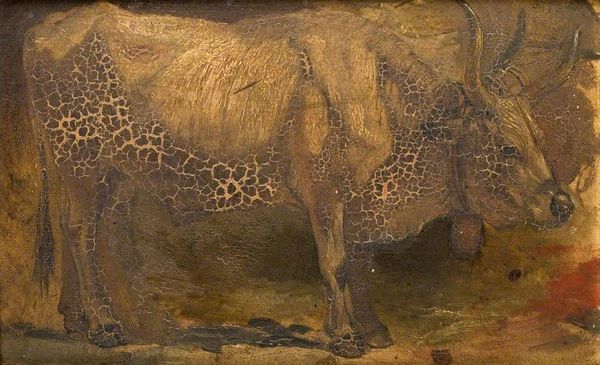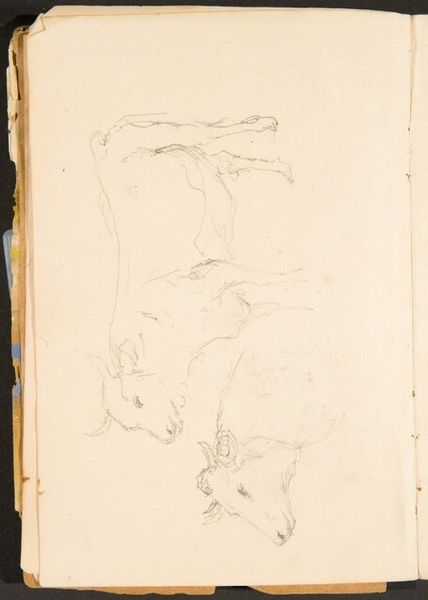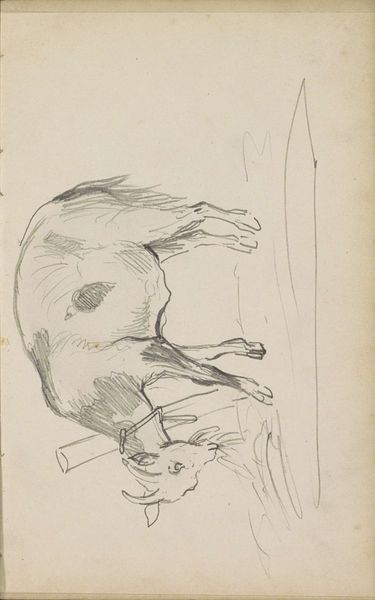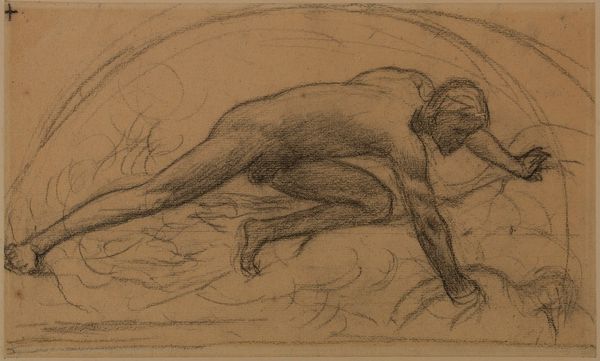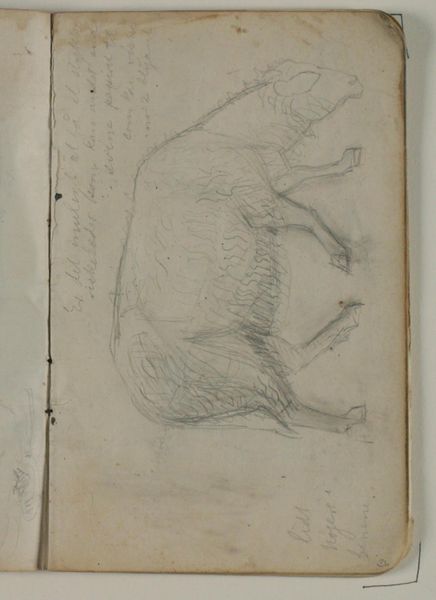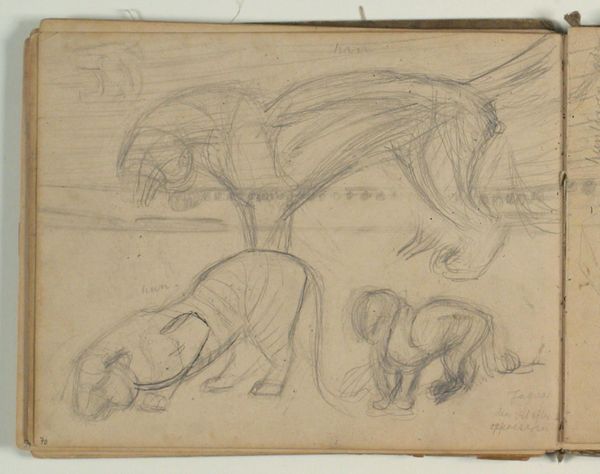
drawing, watercolor, ink
#
portrait
#
drawing
#
narrative-art
#
landscape
#
charcoal drawing
#
figuration
#
oil painting
#
watercolor
#
ink
#
genre-painting
Copyright: Public domain
Curator: Robert William Buss created this preliminary sketch called "Cartoon for 'The Mock Mayor.'" I see watercolor, ink, and possibly some charcoal working together on this layered drawing. It gives me a sense of organized chaos. Editor: "Organized chaos" is an interesting way to describe it! I see a stark division. The left panel is a more finished composition depicting two figures, while the right is dominated by the figure of a donkey or mule, underneath a barely-there, almost spectral human form. It evokes a society structured by clear economic divisions, and perhaps an intended critique of leadership that allows for this disparity. Curator: Agreed. Let's deconstruct the two sides individually. In the left panel, we have a very clearly delineated figure and the careful deployment of bright color. The character on top is lively and almost spilling out into the frame. Below them, a smaller person seemingly shrinks into the pictorial space. What’s at play with such abrupt disjunctions of scale and execution? Editor: This use of disproportionality suggests the overt imbalances in power—those on top benefit from societal structures while the labor and dignity of those below, depicted here literally smaller and obscured, are erased. On the right, the partially drawn woman atop the donkey highlights themes of exploitation. Donkeys and mules are work animals and this is a depiction that implies gendered or classist domination. Curator: Your reading really opens this work. I was thinking, too, of how the donkey is in a state of collapse. The positioning emphasizes a weight, both physical and metaphorical, resting heavily on its bowed head and limp legs. This angle draws a downward direction across the entire drawing. Editor: Absolutely, that is precisely why the piece functions as more than a mere observational artwork. By emphasizing the suffering and struggle of subjugated people, Buss crafts a narrative rife with implicit resistance and prompts crucial conversations about social structures. Curator: Thinking structurally about how the figures have been carefully staged is critical to our understanding. And for me, I see how form communicates in conjunction with socio-political conditions. It leaves me with a real feeling of uncertainty about society then and even society today. Editor: Indeed. As viewers, we are not passive observers, but participants implicated in an ongoing interrogation of the systems that shape our shared world. It certainly feels relevant to our present moment.
Comments
No comments
Be the first to comment and join the conversation on the ultimate creative platform.
